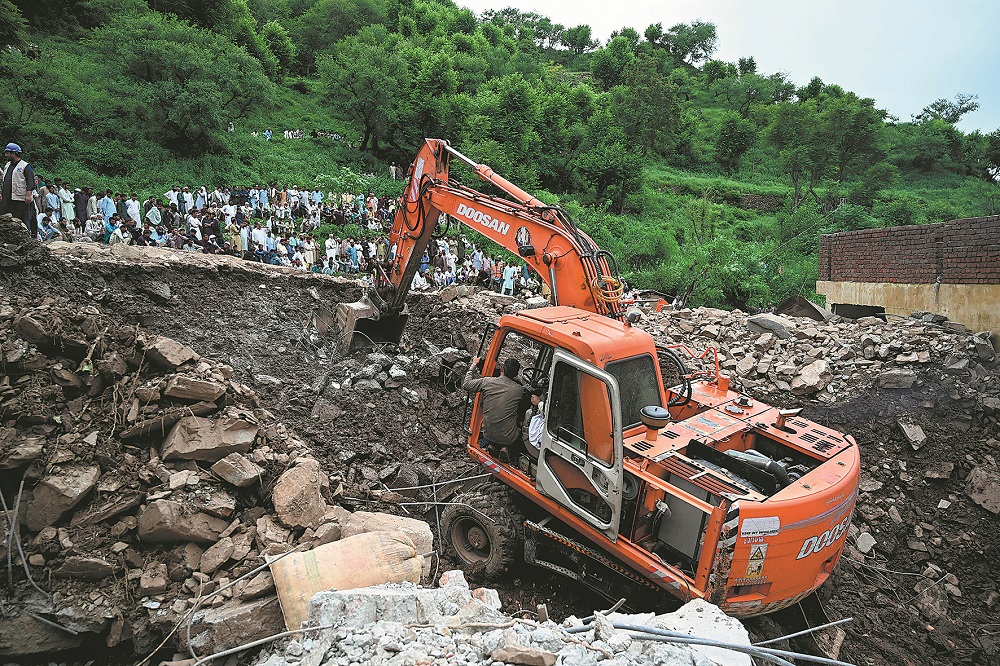Monsoon rains pile misery
Flood crisis hits Pakistan's mountainous north, causing massive loss to life and property


The journalist said the plains once crowded with tiny abodes, had been completely washed away. From afar, wooden planks and concrete pieces could be seen floating in water — the remnants of a life that once was. "No one knows what happened to the residents of these houses," he said.
Everywhere, locals had gathered to search for missing people and their bodies.
"They were digging through the stones, but it was all in vain… how can humans remove elephant-sized boulders?" the reporter observed. "There was also a sense of bewilderment among them… no one knew exactly what happened. Some said it was thunder rain, others said a part of the mountain had cracked open, yet others said it was a GLOF event … but no one knew what exactly had caused these floods."
GLOF stands for glacial lake outburst flood, which indicates sudden release of water from a lake fed by glacier melt.
Instead, all they knew was that a disaster had struck.
According to the national and provincial disaster management authorities, the flash floods this year were induced by cloudbursts — sudden and heavy downpour of rain, typically localized and of short duration.
Cloudbursts occur due to a range of atmospheric conditions, primarily when warm and moist air or monsoon winds are forced upwards along mountain slopes, causing the air to expand, cool, and condense rapidly, leading to sudden and intense rainfall, explained World Wildlife Fund — Pakistan Director Haider Raza.
Cloudbursts cause downpour that is not just heavy but also intense, and can dump up to 200 millimeters of rain, he said.
























